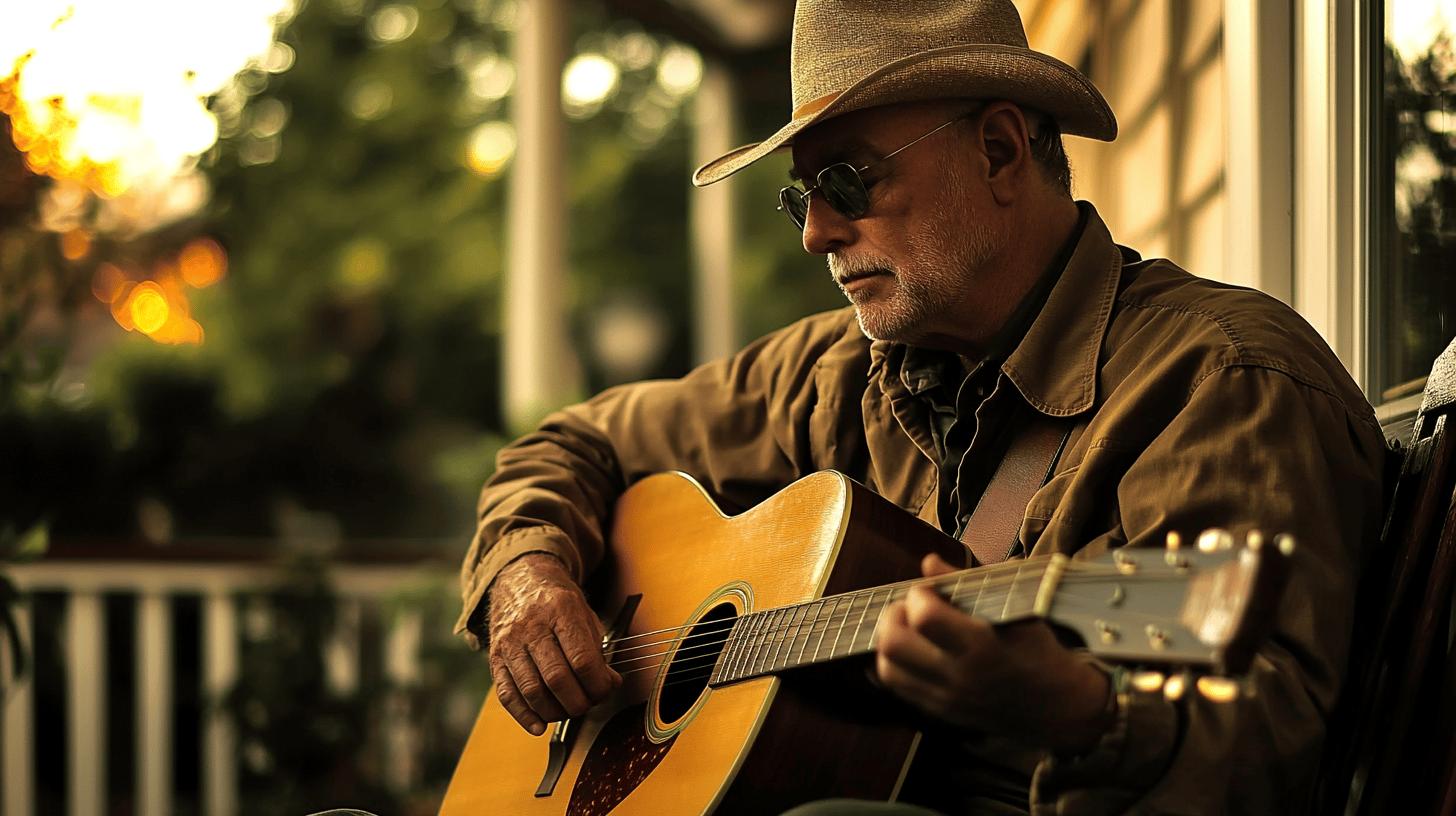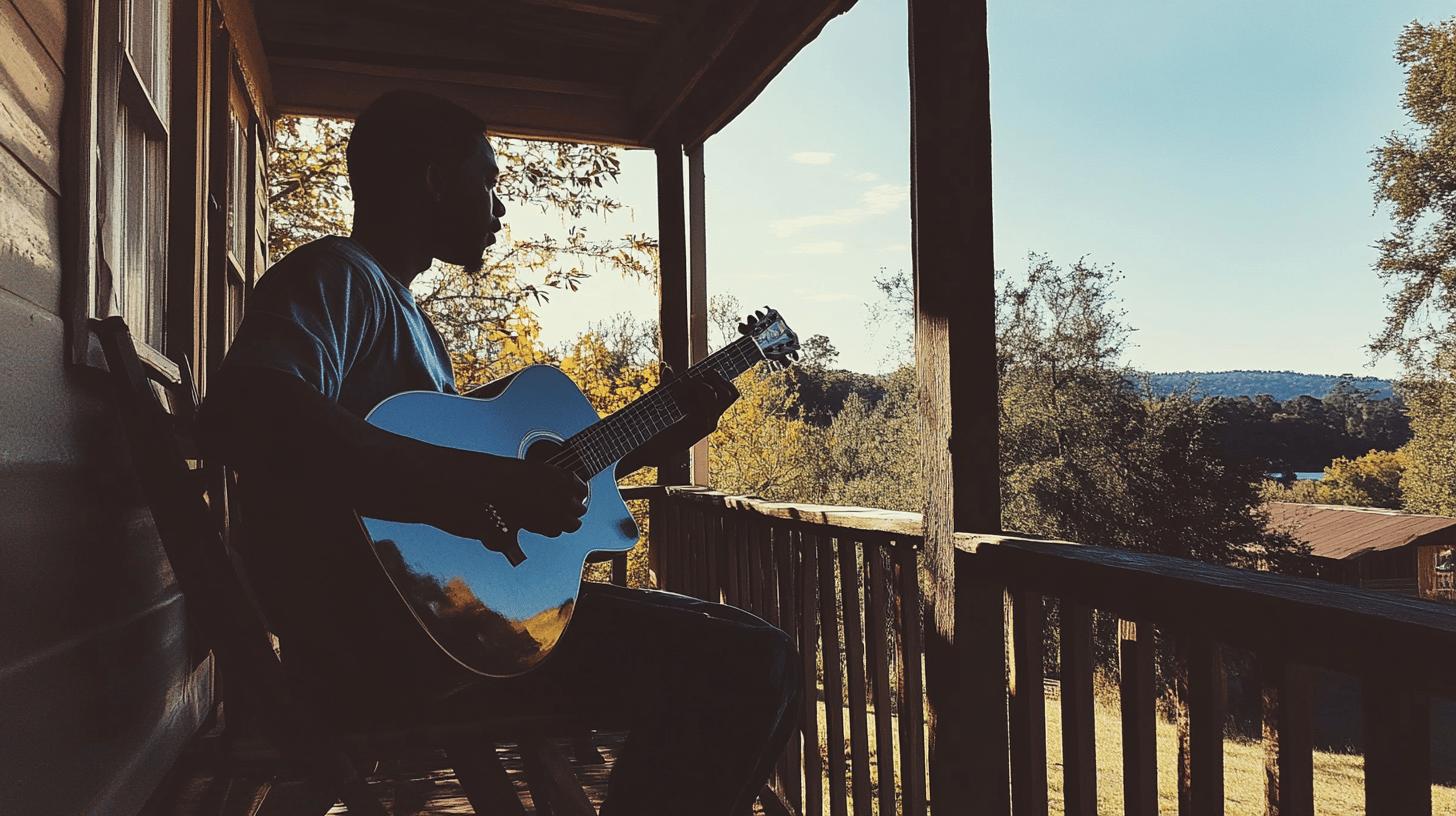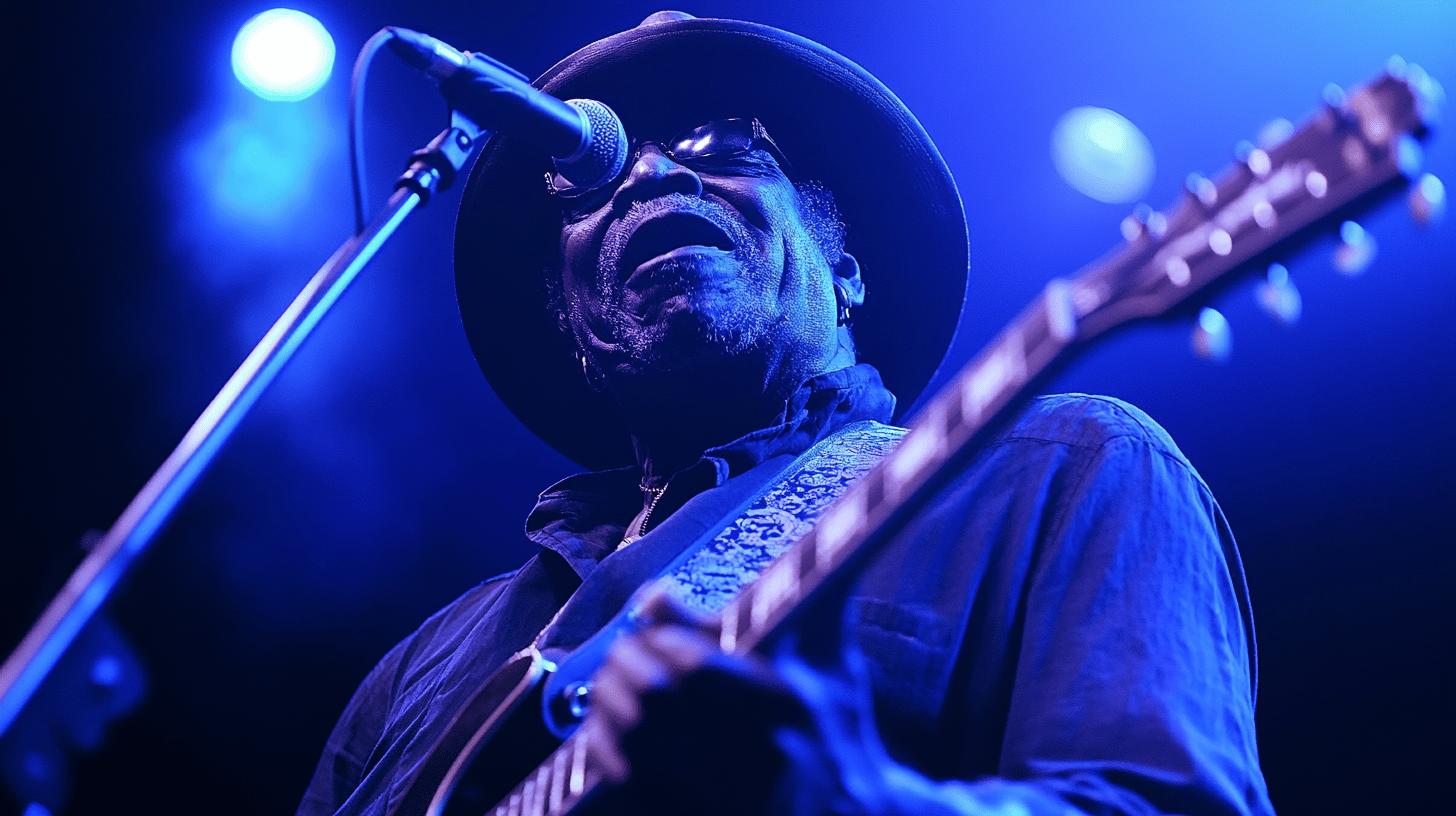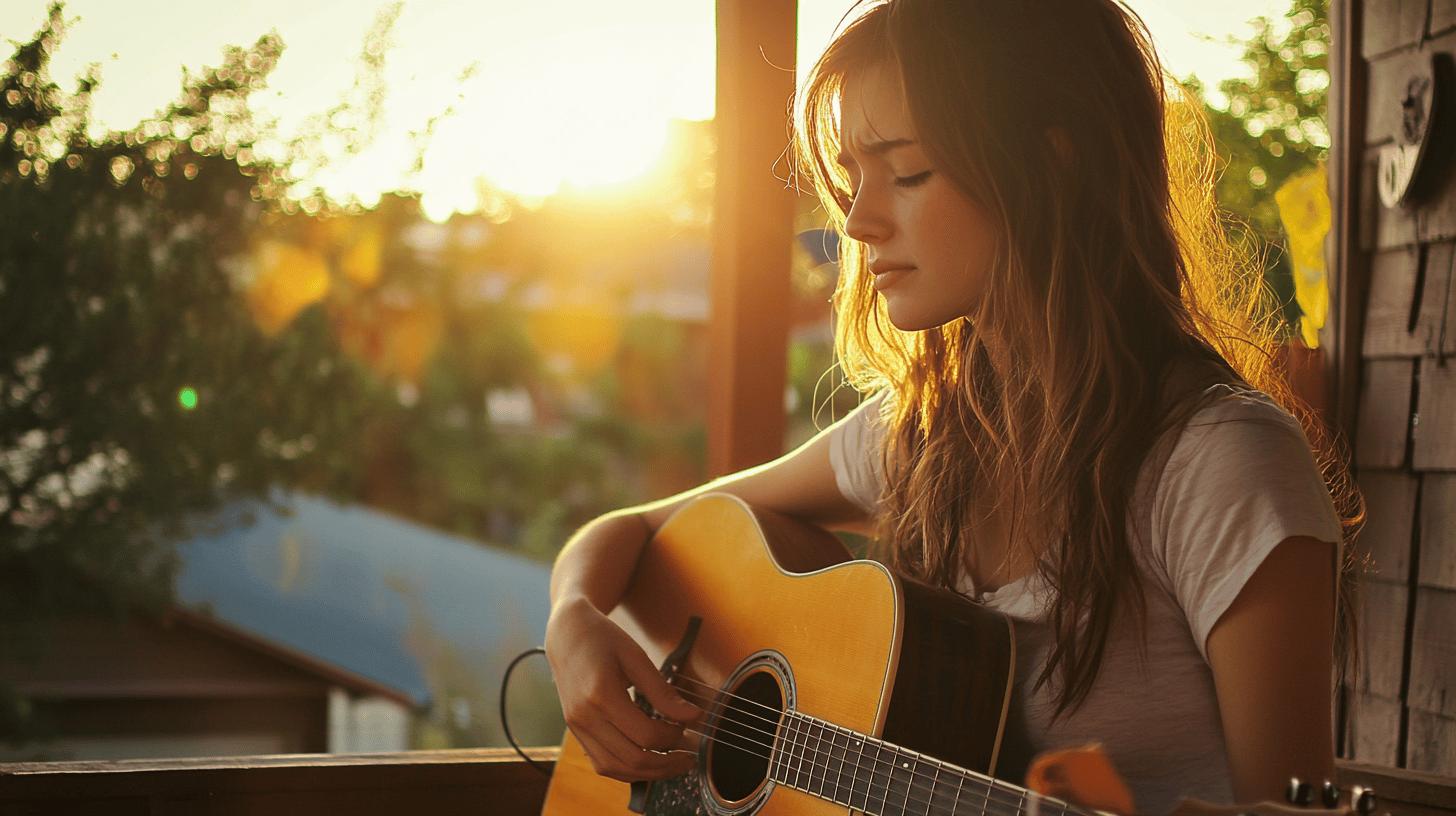Is blues music more than just a genre soaked in melancholy and sadness? Originating in the Deep South in the late 19th century, blues has deep roots in African American history.
This soulful music draws from African traditions, spirituals, and work songs, creating a rich tapestry of emotional depth. While often associated with feelings of heartbreak and resilience, the true essence of blues runs much deeper.
This exploration seeks to uncover the core of blues music, providing a foundational understanding of its definition and its powerful ability to convey complex emotions.
Understanding the Definition of Blues Music

Blues music, named for its emotionally charged themes, often conveys feelings of melancholy and sadness. Originating in the Deep South of the United States around the end of the 19th century, it is deeply rooted in African American history.
The genre evolved from African musical traditions, spirituals, and work songs, reflecting the cultural and social experiences of its creators. These elements combined to form a new, distinct musical style that resonated with the struggles and triumphs of everyday life.
The emotional impact of blues music is profound, characterized by its ability to express deep, personal feelings. Themes often revolve around life’s hardships and adversities, offering a raw and honest reflection of human experiences.
This genre uniquely captures a spectrum of emotions, from the depths of despair to a sense of resilience and hope. Blues music serves as a powerful vehicle for storytelling, allowing artists to connect with listeners on an intimate level through its evocative narratives.
-
Melancholy
-
Sadness
-
Resilience
- Heartbreak
Historical Evolution of the Blues Genre

The history of blues music traces back to the late 1800s in the southern United States, where it emerged from the African-American community. This genre was a blend of European and African musical elements, reflecting the cultural synthesis that characterized its origin.
Delta blues, one of the earliest forms, was typically performed solo, utilizing instruments like the guitar or piano. The music was often played in informal settings, resonating with themes of rural life and personal struggles.
These performances embodied a raw, emotional expression that was both powerful and intimate, capturing the essence of everyday challenges and victories.
As the blues genre evolved, it transitioned from its rural roots to urban landscapes, giving rise to what is known as urban blues.
This shift was largely facilitated by the Great Migration—the movement of African-Americans from the rural South to northern cities in search of better opportunities. Urban blues incorporated new instruments and technologies, leading to the electrification of the sound.
Chicago became a major hub for this style, where musicians expanded the traditional blues framework, introducing a more polished and diverse sound. The urban blues era marked a significant transformation in the genre, bringing a broader audience and greater complexity to the music.
The influence of the Great Migration on blues music was profound. As African-Americans settled in urban areas, they brought their musical traditions with them, which soon adapted to new social and economic environments.
This migration not only altered the sound and style of blues but also expanded its reach and influence. The migration facilitated cultural exchanges that enriched the genre, allowing it to evolve continuously.
Blues music became a conduit for storytelling, capturing the collective experiences of a community navigating the challenges of displacement and adaptation.
| Era | Characteristics |
|---|---|
| Late 1800s | Southern origins, Delta blues, rural life themes |
| Early 20th Century | Urban blues emergence, Chicago hub, electrification |
| Great Migration | Cultural exchange, adaptation to urban settings |
Key Elements and Characteristics of Blues Music

What are the common characteristics of blues music? The most defining elements include specific chord progressions, particularly the twelve-bar blues, a staple in the genre’s structure.
This progression typically involves three chords, creating a cyclical pattern that forms the backbone of many blues compositions. Another fundamental feature is the use of blue notes, which are notes played at a slightly lower pitch than those of the major scale.
This subtle deviation introduces a distinctively mournful and expressive quality, enhancing the emotional depth of the music. Improvisation and emotional expression are central to blues music, allowing musicians to convey personal stories and emotions through their performances.
The improvisational aspect of blues provides artists the freedom to explore and experiment with their sound, making each performance unique.
This spontaneity is often reflected in the emotive delivery of the music, where artists channel their feelings into their playing. The result is a powerful, visceral connection with the audience, as the music communicates themes of struggle, resilience, and hope.
-
Guitar
-
Harmonica
-
Piano
- Drums
Influential Blues Artists and Their Impact

Who are the early influential blues artists? B.B. King, Muddy Waters, Robert Johnson, and Howlin’ Wolf are among the most famous pioneers of the blues genre.
These musicians not only shaped the sound and style of blues music but also laid the groundwork for future generations of artists. B.B. King, known as the "King of the Blues," was renowned for his expressive guitar playing and soulful vocals.
Muddy Waters brought blues to the forefront of American music culture with his electrifying performances, while Robert Johnson’s haunting lyrics and guitar work became legendary.
Howlin’ Wolf’s powerful voice and commanding stage presence further solidified blues’ place in American music history.
What was the British Blues movement? In the late 1950s and 1960s, the British Blues movement emerged, heavily influenced by American blues artists.
Musicians like Eric Clapton, The Rolling Stones, and Led Zeppelin were captivated by the raw emotion and musical complexity of blues. They began incorporating these elements into their own music, creating a new wave of blues-influenced rock.
This movement not only brought blues music to a wider audience but also highlighted the genre’s global appeal. The British Blues scene played a crucial role in reviving interest in the genre and served as a catalyst for its evolution.
How did blues influence rock and roll? The crossover influence of blues on rock and roll is profound, as many rock musicians drew inspiration from the blues’ emotive storytelling and musical techniques.
Artists such as Jimi Hendrix, who infused blues elements with psychedelic rock, and The Rolling Stones, who maintained a bluesy edge in their sound, exemplify this impact.
The integration of blues into rock and roll not only broadened the genre’s appeal but also diversified its sound, leading to the emergence of sub-genres like blues rock.
This blend of styles continues to resonate with audiences today, underscoring the enduring legacy of blues music.
-
Christone “Kingfish” Ingram
-
Gary Clark Jr.
The Ongoing Influence and Evolution of Blues Music

How did the blues revival affect the music scene? The blues revival of the 1960s had a profound impact on the music landscape, notably among white musicians and audiences.
This resurgence brought blues music back into the spotlight, rekindling interest in its roots and traditions. Artists and bands during this period sought inspiration from the raw emotion and storytelling inherent in blues, leading to a renewed appreciation and exploration of the genre.
The revival not only introduced blues to a broader audience but also played a crucial role in preserving its legacy, as musicians integrated elements of blues into various musical styles, enriching the cultural tapestry of the time.
What role does contemporary blues play in the modern music world? Contemporary blues continues to thrive, often blending with other genres to create innovative sounds.
Today, blues music is an integral part of the Americana musical landscape, with artists like Christone “Kingfish” Ingram and Gary Clark Jr. leading the charge. These modern blues musicians honor traditional blues while infusing it with contemporary influences, ensuring the genre remains relevant and dynamic.
The adaptability of blues allows it to resonate with new generations, maintaining its emotional depth and storytelling power. As a result, blues continues to be a significant cultural force, influencing a wide array of modern music genres.
-
Jazz
-
Rock and Roll
-
Rhythm and Blues
-
Soul
-
Americana
Final Words
Tracing the emotional depth of blues, from its roots in the Deep South, reveals its profound significance. The genre’s evolution, driven by the Great Migration, transformed its sound and reach.
With key musical characteristics like the 12-bar blues, it remains foundational in music history. Influential blues artists have left a lasting impact, shaping the soundscapes of rock and modern genres.
Today, the ongoing influence of blues continues to resonate, proving its enduring relevance and adaptability.
FAQ
What is blues music?
Blues music is a genre named for its emotional themes, often expressing feelings of melancholy and sadness. It originated in the Deep South of the United States, rooted in African American history.
What is blues slang?
Blues slang typically refers to informal language and expressions used within the blues community. This includes terms related to music, emotions, and life experiences commonly reflected in blues songs.
What is blues artists?
Blues artists are musicians who perform and write in the blues genre. Influential blues artists include figures like B.B. King, Muddy Waters, Robert Johnson, and Howlin’ Wolf.
What are the characteristics of blues music?
The characteristics of blues music include specific chord progressions like the twelve-bar blues, blue notes, and improvisation. Common instruments are guitar, harmonica, piano, and drums.
Which feeling is the blues known for expressing?
Blues is known for expressing feelings of melancholy, sadness, resilience, and heartbreak, reflecting the emotional depth of personal and communal experiences.
What instruments are used in blues music?
Instruments typically used in blues music include the guitar, harmonica, piano, and drums, which allow for rich harmony and emotional expression.
What is the history of blues music?
The history of blues music dates back to the late 1800s in the southern United States. It evolved from Delta blues to urban blues through the Great Migration and technological advancements.
What are famous blues songs?
Famous blues songs often include "The Thrill Is Gone" by B.B. King, "Sweet Home Chicago" by Robert Johnson, and "Hoochie Coochie Man" by Muddy Waters.
How do you define the blues?
The blues is defined as a music genre that combines African and European musical elements, typically characterized by expressive melodies and themes of personal struggle and resilience.
Is blues happy or sad?
Blues is generally associated with sad and melancholic themes but also embodies a sense of resilience and emotional catharsis for both performers and listeners.
How do you identify blues?
Blues can be identified by its use of the twelve-bar progression, blue notes, and characteristic lyrical themes. It often features improvisational elements and emotionally expressive performance styles.
What does have the blues mean?
"Have the blues" refers to feeling sad or melancholic. The phrase signifies a mood of sadness, often expressed through or alleviated by blues music.

